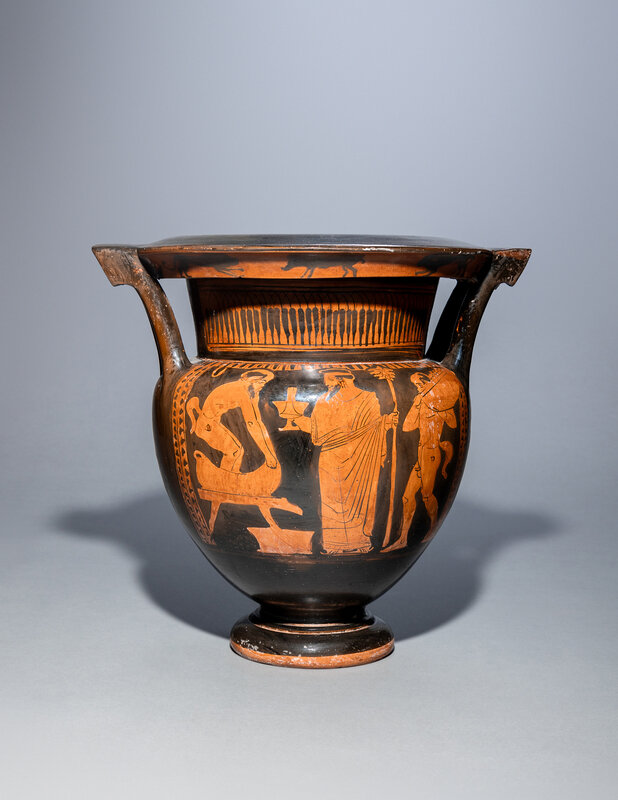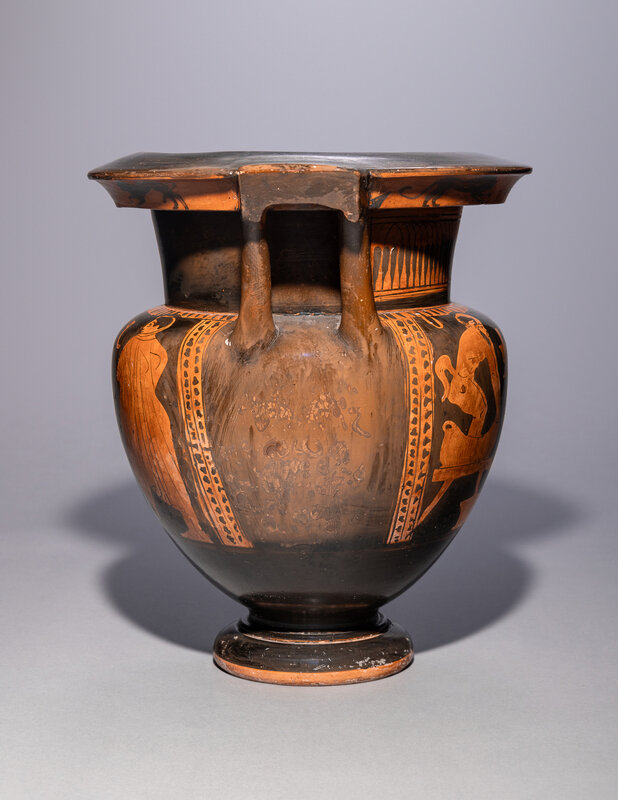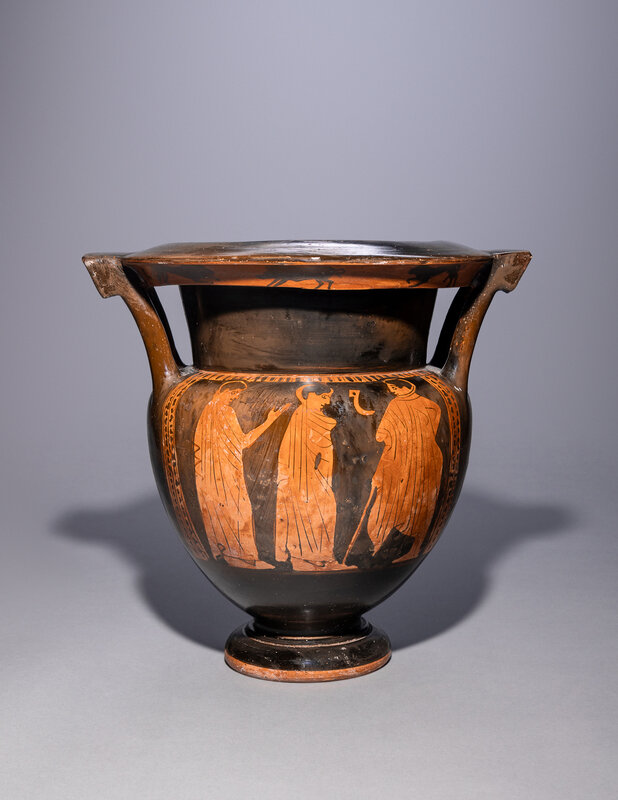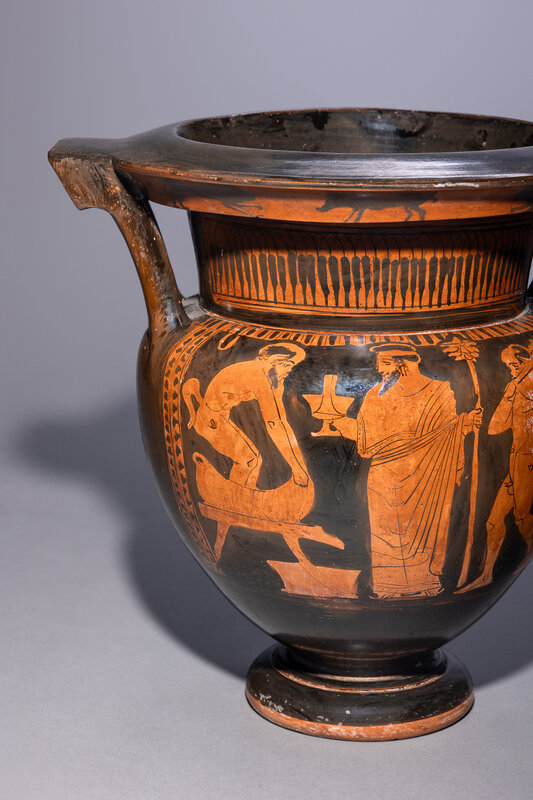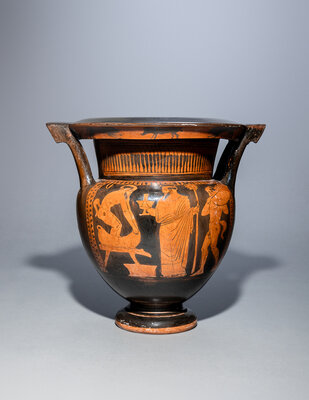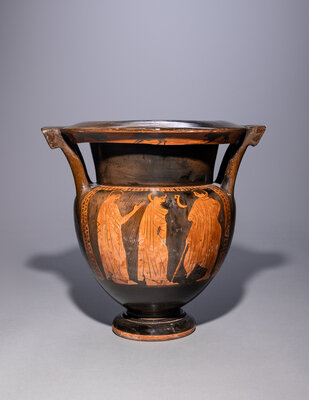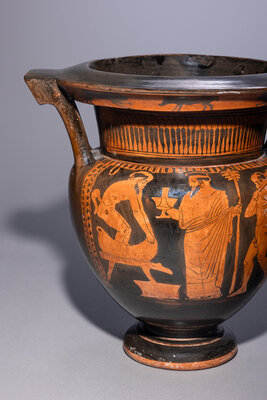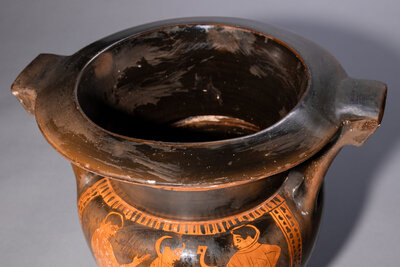Condition Report
Contact Information
Auction Specialist
Lot 158
An Attic Red-Figured Column Krater
Sale 1343 - Antiquities and Ancient Art
May 23, 2024
10:00AM CT
Live / Chicago
Own a similar item?
Estimate
$12,000 -
18,000
Price Realized
$16,510
Sold prices are inclusive of Buyer’s Premium
Lot Description
An Attic Red-Figured Column Krater
Attributed to the Painter of the Louvre Centauromachy, Circa 470-460 B.C.
Height 13 1/8 inches (33.34 cm).
